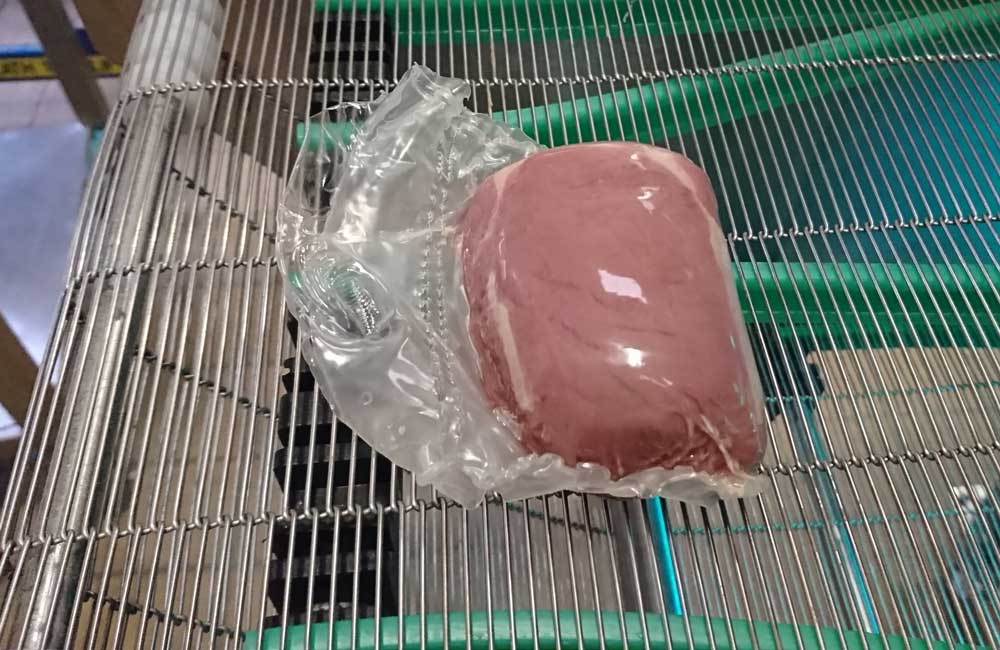Cuts of pork tenderloin were inoculated with Listeria monocytogenes before being vacuum shrink wrapped and treated with various doses of UV-C iradiation to determine the microbial reduction.
Purpose
UV-C treatment of meat in pack can potentially increase the safety of food with minimal risk of post process contamination. The trial assessed the feasability of UV-C for in-pack decontamination. The lowest dose for maximum microbial reductions was assessed.
Main conclusions
Log reductions averaging 0.4 log achieved for 80 mJ/cm2, higher average reductions of 0.77 and 0.64 was achieved for 160 and 320 mJ/cm2, respectively.
Variations in log reductions in samples were believed to be due to the different surface topology between individual samples.
Methods
Pork tenderloins were purchased from a local UK butcher. The loins were cut to obtain 3samples per loin, with a average weight of around 0.25kg per sample.
The pork was spray inoculated on the outside of the loin with an initial load of around 3log CFU/100 ml of L.monocytogenes.
The pork was then vacuum packed shrink wrapped by exposing the packaging to 85°C for 2sin UV-C transmisable packaging (around 65% UV-C transmission).
The packaged pork was then passed through a UV-C tunnel delivering UV-C doses of 80,160and 320mJ/cm2inside the pack with 3 relicates per dose and 3 control samples.
The level of microorganims on the treated porkwere compared to the control samples to determine the log reduction achieved.
What was investigated/ examined/ measured
The average microbial reduction achieved for each UV-C dose.
Parameter 1 Population of L.monocytogenes on treated pork(sprayinoculation
- 80 mJ/cm2–0.4±0.4CFU/100 ml reduction
- 160 mJ/cm2–0.77±0.38CFU/100 ml reduction
- 320 mJ/cm2–0.64±0.56CFU/100 ml reduction


